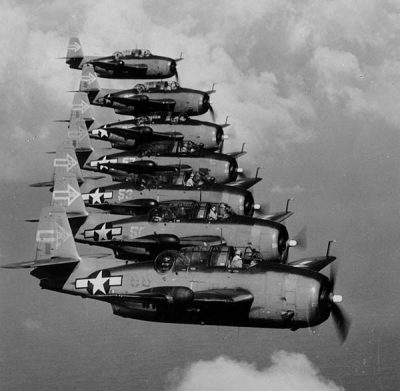
George H.W. Bush passed from this earth on November 30, 2018. Doctor Aviation remembers George H.W. Bush the Naval Aviator.
Significant events can shape the life of a generation for better or worse. I had a relative significantly shaped by the counterculture movement of the 1960s. Conversely, a B-52 pilot and fellow instructor at the AF Academy was moved by the election of Ronald Reagan and his effervescent optimism which brought patriotism and love of the Stars and Stripes back into vogue after the dormancy of the 1970s. Several of my cadets at the Air Force Academy were stunned and propelled into action by the shocking and brutal terrorist attacks of 9/11.
So it was for many of the young men born in the early and mid-1920s. Men like my Uncle Howard. Reared in the “Roaring Twenties’ all seemed well until the brokenness of the world reared its ugly head via the Great Depression. Congress and FDR enacted the Smoot-Hawley Act and further plunged the country into depression for the entire decade. Then on a Sunday afternoon in December of 1941, families in American heard on their radios that America had been attacked. America! The brokenness reared its ugly head again. For young men like my Uncle Howard and George Bush, it changed everything.

Bush had just turned 17 and was a senior in high school in Andover Massachusetts. Soon he was on his way to the recruiting station. He signed up for the Navy. Off he went to the USS Sable where he trained to fly off aircraft carriers. He received his pilot wings at age 18, the youngest pilot in the Navy.
The Army Air Corps dominated the air campaign over Europe. They operated off a gigantic island known as Great Britain. The Navy and Marines shouldered the load in the Pacific. They operated off small island such as Saipan and large aircraft carriers like the USS San Jacinto (Bush’s carrier).

Bush was assigned to the Grumman TBM Avenger Torpedo Bomber. Its mission was to bomb enemy ships. Later the aircraft was used for Close Air Support of ground troops and aerial reconnaissance (Avenger Facts). He flew 58 combat missions, many of the memorable, but two in particular stood out.
On June 19, 1944 while flying over the Marianas Islands in a fierce battle, his aircraft became inoperable. He was forced to ditch the aircraft in the Pacific. The USS Clarence K Bronson, a naval destroyer, rescued him. I met someone whose relative was aboard the destroyer that day. They described Bush as a skinny young pilot (he had just turned 20).

Even more memorable, if that is possible, was his flight on September 2, 1944. Flying over the Bonin Islands, specifically Chi Chi Jima, he encountered ground flak from the island below. The next thing he knew his plane was on fire. He limped the plane out over the ocean. He and his crew bailed out and began to bob on a raft in the shark-infested waters of the Pacific. Would anyone arrive to rescue him in time? If they did, would they be Americans, or Japanese? (Bush shoot down)
Fortunately, a submarine, the USS Finback, popped to the surface and secured the bobbing Bush safely inside the submarine. Later he was informed that the Japanese often cannibalized young aviators on a nearby island. Bush quipped, “I would make a poor meal”. Bush Quip

This is twice in the last few months that a prominent American political leader has died with military aviation roots. Bush and my Uncle Howard symbolize millions of men born in the between 1916 and 1925 who were thrust to the tip of the spear in the 20th Century’s Great Battle over life and liberty. For Bush it began on December 7, 1941. It ended, on earth, on November, 30, 2018. Thank you for your service.
For a great photo of Bush’s carrier see: USS Jacinto
For a great photo of the submarine rescue see: Bush Submarine

